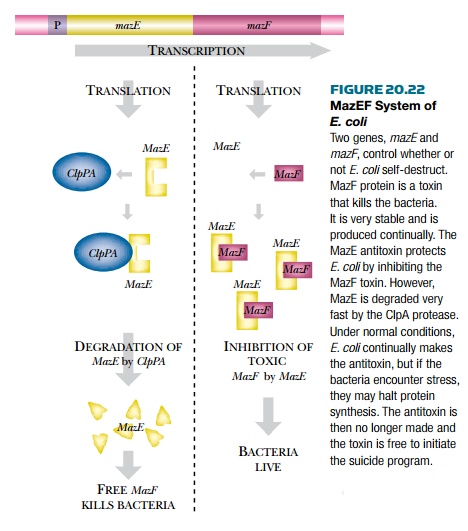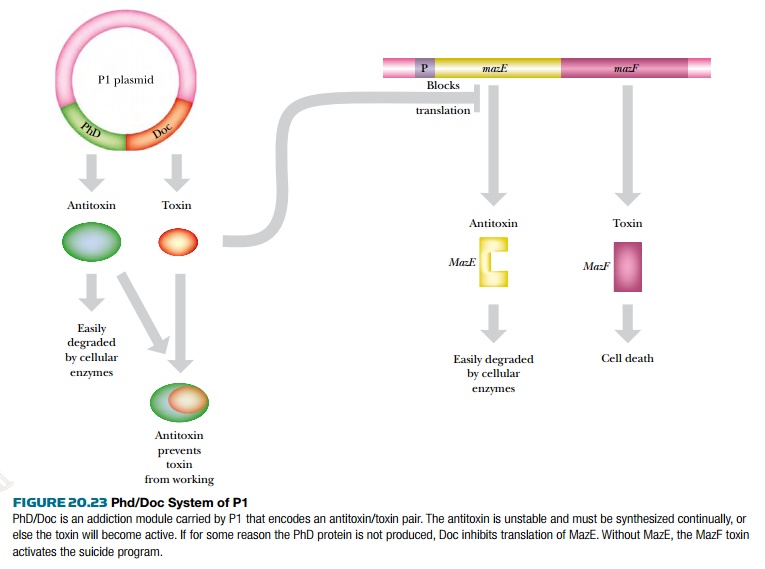Chapter: Biotechnology Applying the Genetic Revolution: Aging and Apoptosis
Programmed Cell Death in Bacteria
PROGRAMMED
CELL DEATH IN BACTERIA
Although apoptosis has not been seen in
single-celled organisms, a genetic system that kills Escherichia coli when
under extreme stress does exist. Morphologically, the death does not resemble
apoptosis, but like apoptosis, the death system is genetically encoded. In E.
coli , an addiction module of two genes controls the death-inducing system
( Fig. 20.22 ). One gene encodes a toxin, MazF, which is quite stable. The
second gene encodes the antitoxin, MazE, which prevents the toxin from killing
the bacteria. The antitoxin is unstable and degrades very fast after translation.
If its transcription or translation is stopped or slowed in any way, the level
of antitoxin plummets and the toxin kills the bacteria.
The MazF toxin is a specific
endoribonuclease that degrades messenger RNA. It recognizes the sequence ACA
and cleaves to the 5′-side. Such enzymes have been named mRNA interferases and
have now been found in a variety of bacteria. The net result is thedestruction
of mRNA followed by a halt in protein synthesis. Cell death rapidly follows.

When bacteria are depleted of nutrients,
transcription and translation slow down, and this may trigger the MazEF suicide
system. Perhaps some E. coli commit suicide for the good of the rest,
because the proteins, lipids, and nucleic acids of the dead cell could provide
food for nearby cells. Despite being unicellular, bacteria have genetic
programs for the good of the population. Another theory is that the MazEF
suicide system is designed to limit the multiplication of bacterial viruses.
Indeed, mutants of E. coli deleted for the whole mazEF operon
give higher yields of bacteriophage when they burst. In wild-type cells, the
MazEF system kills the cell before virus replication is complete and thus reduces
the number of viruses produced.

Addiction modules also exist in
bacteriophages such as P1 and lambda that are maintained in a lysogenic state.
The toxin/antitoxin pair of proteins prevents the bacteriophage genome from
being destroyed or lost during E. coli growth. The bacteriophage genome
encodes both the toxin and the antitoxin. Just as in the MazEF system, the
toxin protein is very stable, whereas the antitoxin degrades quickly and must be
produced continually. If the P1 or lambda genome is lost, the stable toxin
protein will kill the bacteria. Interestingly, the toxin produced by P1 does
not kill E. coli directly but acts by activating the bacterium’s own
MazEF system ( Fig. 20.23 ). The P1 toxin inhibits translation of the MazE
antitoxin, which activates the MazF toxin, which in turn kills the cell.
Related Topics